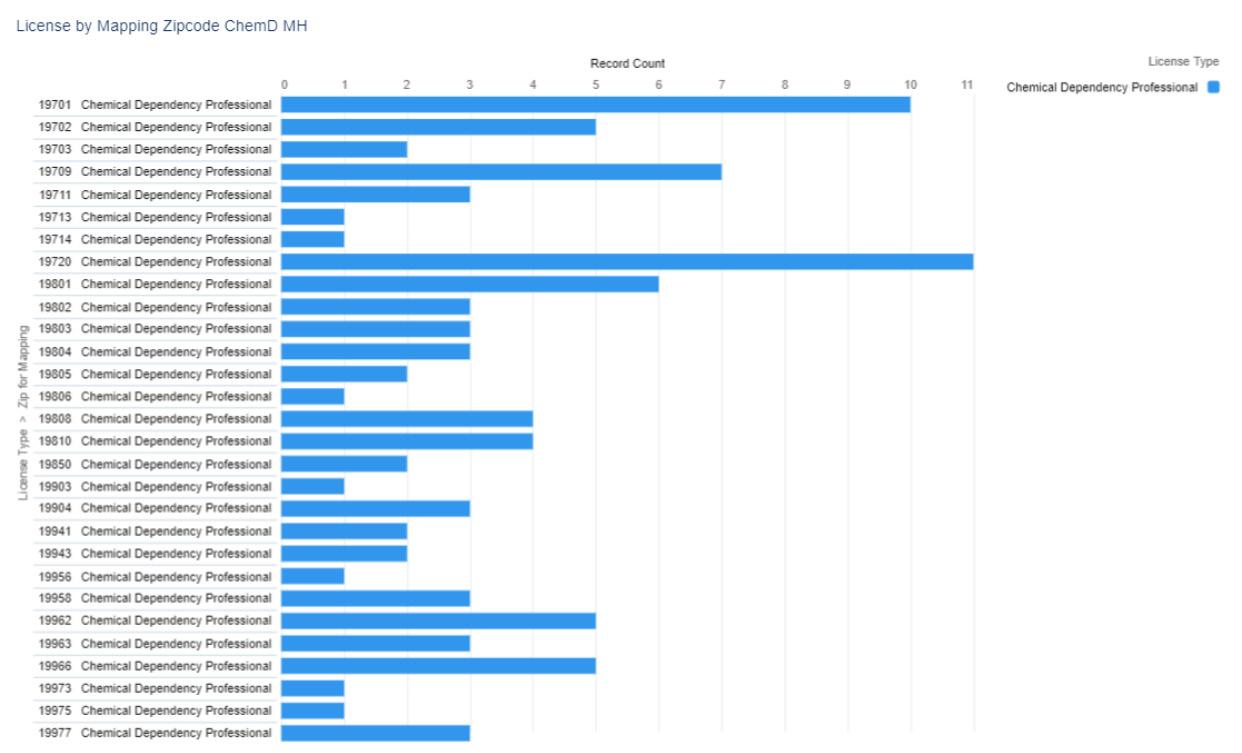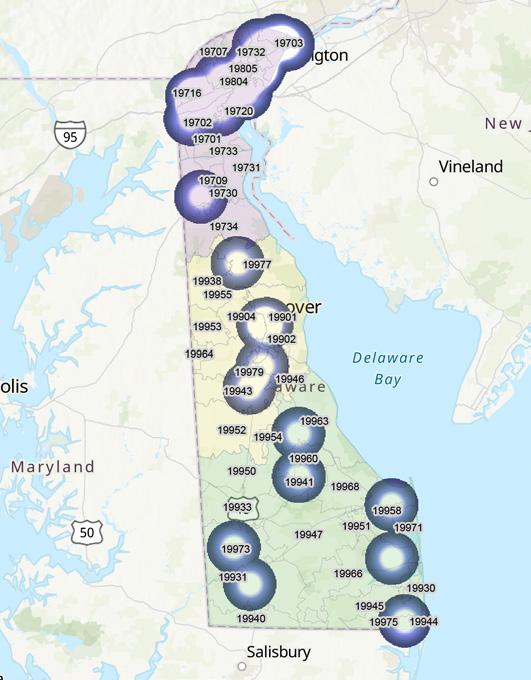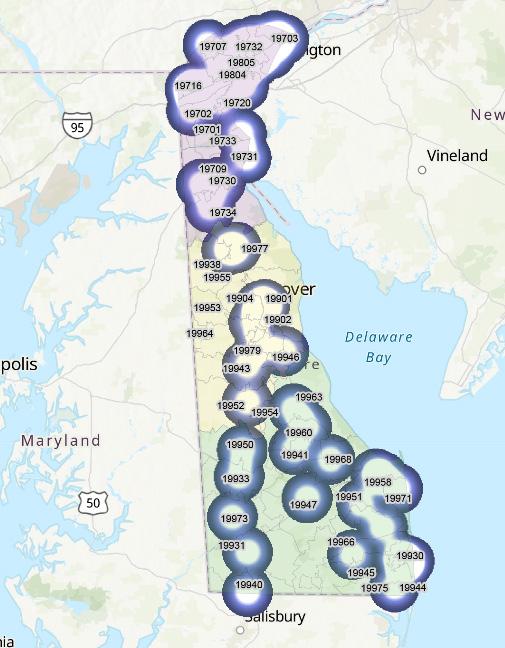
3 minute read
Board of Mental Health and Chemical Dependency Professionals
from DJPH - Delaware's Healthcare Workforce
by Delaware Academy of Medicine and the Delaware Public Health Association
The primary objective of the Delaware Board of Mental Health and Chemical Dependency Professionals is to protect the public from unsafe practices and practices which tend to reduce competition or fix prices for services. The Board must also maintain standards of professional competence and service delivery. To meet these objectives, the Board • develops standards for professional competency, • promulgates rules and regulations, • adjudicates complaints against professionals and, when necessary, imposes disciplinary sanctions. The Board issues licenses to professional counselors of mental health, associate counselors of mental health, chemical dependency professionals, marriage and family therapists and associate marriage and family therapists (see figures 1-3). The Board’s statutory authority is in 24 Del. C., Chapter 30.
PROFESSIONAL ART THERAPISTS
Art therapy is an integrative mental health and human services profession that enriches the lives of individuals, families, and communities through active art-making, creative process, applied psychological theory, and human experience within a psychotherapeutic relationship.1 Art therapy, facilitated by a professional art therapist, effectively supports personal and relational treatment goals as well as community concerns. Art therapy is used to improve cognitive and sensorimotor functions, foster self-esteem and self-awareness, cultivate emotional resilience, promote insight, enhance social skills, reduce and resolve conflicts and distress, and advance societal and ecological change.1
ASSOCIATE MARRIAGE AND FAMILY THERAPISTS
Individuals licensed as associates are in the process of accumulating hours towards their full licensure.2
MARRIAGE AND FAMILY THERAPISTS
Marriage and family therapists work with individuals, couples, and families. They bring a family-centered perspective to treatment, even when treating individuals. They evaluate family roles and development, to understand how clients’ families affect their mental health.3
CHEMICAL DEPENDENCY PROFESSIONALS
Chemical Dependency Counselor runs individual, family, and group counseling for patients in chemical dependency programs. Acts as mediator between patients, relatives, medical staff, and outside agencies if needed. Being a Chemical Dependency Counselor tracks patient progress and dispensation of treatment services (see figures 4 & 5).4
ASSOCIATE COUNSELOR OF MENTAL HEALTH
Duties include leading individual and group therapy or interventions, administering medication, providing assistance to patients with their daily hygiene or self-care routines, and supervising recreational activities.5
PROFESSIONAL COUNSELOR OF MENTAL HEALTH
Counsels clients and patients, individually and in group sessions, to assist in overcoming dependencies, adjusting to life, and making changes. Maintains confidentiality of records relating to clients treatment. Guides clients in the development of skills and strategies to deal with their problems (see figures 6 & 7).6
* an active license does not guarantee an individual is actively seeing patients.
Figure 2. Active Mental Health and Chemical Dependency Professional Licenses by Gender by select license types (when reported)

* According to the Social Security Administration “Full retirement age is the age when you can start receiving your full retirement benefit amount. The full retirement age is 66 if you were born from 1943 to 1954. The full retirement age increases gradually if you were born from 1955 to 1960, until it reaches 67. For anyone born 1960 or later, full retirement benefits are payable at age 67.”


Figure 5 shows most, but not all, ZIP codes due to scaling limitations. Hot spots are employed to bring perspective to viewing the overall map and distribution of healthcare professionals and should not be interpreted has valuing value without referring to the numbers listed in the chart above.
Figure 5. Visual Distribution of Active License Chemical Dependency Professionals by ZIP code


Figure 7 shows most, but not all, ZIP codes due to scaling limitations. Hot spots are employed to bring perspective to viewing the overall map and distribution of healthcare professionals and should not be interpreted has valuing value without referring to the numbers listed in the chart above.
Figure 7. Visual Distribution of Active License Professional Counselors of Mental Health by ZIP code

REFERENCES
1. American Art Therapy Association. (n.d.). About art therapy.
Retrieved from: https://arttherapy.org/about-art-therapy/ 2. American Association for Marriage and Family Therapy. (n.d.). Delaware state resources.
Retrieved from: https://www.aamft.org/Advocacy/State_Resources/Delaware.aspx 3. US Bureau of Labor Statistics. (2022, Aug). Marriage and family therapists. Occupational Outlook Handbook.
Retrieved from: https://www.bls.gov/ooh/community-and-social-service/marriage-and-family-therapists.htm 4. Salary.com. (n.d.). Chemical dependency counselor.
Retrieved from: https://www.salary.com/research/job-description/benchmark/chemical-dependency-counselor-job-description 5. Recruiter, Z. (n.d.). What is a mental health associate and how to become one.
Retrieved from: https://www.ziprecruiter.com/Career/Mental-Health-Associate/What-Is-How-to-Become 6. Society for Human Resource Management. (n.d.). Mental health counselor.
Retrieved from: https://www.shrm.org/ResourcesAndTools/tools-and-samples/job-descriptions/Pages/Mental-Health-Counselor.aspx





